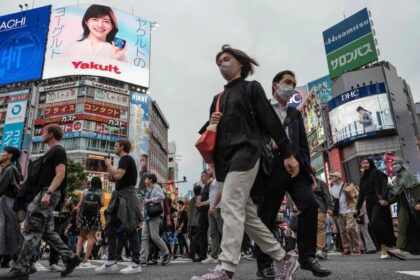Japan’s Day-Care Waiting Lists Hit Record Low
Japan has achieved a significant milestone in its ongoing efforts to support working families: the number of preschool children on waiting lists for day-care facilities has fallen to a record low. As of April, only 2,254 children were waiting for admission to day-care centers across the country, according to the Children and Families Agency. This marks the eighth consecutive year of decline and the lowest figure since the government began tracking these statistics in 1994. The drop is a testament to years of policy reforms, demographic shifts, and evolving social attitudes—but it also highlights persistent challenges in certain regions and among specific age groups.
How Did Japan Achieve This Drop in Waiting Lists?
The dramatic reduction in day-care waiting lists is the result of a combination of government initiatives, demographic changes, and shifting parental behaviors. In 2017, the number of children waiting for day-care peaked at over 26,000. Since then, the figure has plummeted by more than 90%, reaching below 3,000 for the first time in 2022 and continuing to fall in 2023 and 2024.
Several key factors have contributed to this progress:
- Expansion of Childcare Capacity: The government has invested heavily in building new day-care centers, expanding existing facilities, and encouraging private sector involvement. Company-established childcare centers have become more common, increasing total capacity by tens of thousands of spots each year.
- Declining Birthrate: Japan’s birthrate has been falling for decades, resulting in fewer preschool-aged children overall. This demographic trend has eased pressure on the childcare system, even as demand from working parents remains high.
- Parental Leave and Changing Attitudes: More parents, especially mothers, are taking longer childcare leave, temporarily reducing the number of children seeking day-care spots. The COVID-19 pandemic also led some families to delay or forgo enrollment due to health concerns.
According to the Ministry of Health, Labor, and Welfare, as of April 2022, 85.5% of Japan’s 1,741 municipalities had reduced their waiting lists to zero. The average ratio of children to available day-care spots has also declined, indicating that, nationwide, supply is finally catching up to demand.
Government Policy and System Reforms
Japan’s government has made eliminating day-care waiting lists a cornerstone of its social and economic policy. In 2013, a major plan was launched to accelerate the expansion of childcare facilities, with the dual goals of supporting working mothers and boosting the country’s labor force. The introduction of integrated centers for early childhood education and care in 2006, and community-based care facilities in 2015, diversified the types of care available to families.
In 2019, fees for certified day-care facilities became mostly free for children aged three to five, and for children up to two years old from low-income households. This move aimed to remove financial barriers and encourage greater workforce participation among parents, particularly women.
Regional Disparities Remain
Despite the national progress, waiting lists are not evenly distributed. Urban areas—especially Tokyo, Saitama, Osaka, and Hyogo prefectures—continue to see higher demand and longer wait times. For example, Tokyo had 339 children on waiting lists as of April, the highest in the country, followed closely by Shiga, Saitama, Hyogo, and Osaka. In contrast, 17 prefectures reported zero children on waiting lists.
Local governments cite uneven demand as a major challenge. In some neighborhoods, the construction of new apartment complexes or sudden population shifts can quickly overwhelm available facilities. High land prices and limited space in urban centers make it difficult to build new day-care centers where they are most needed.
Why Do Waiting Lists Persist in Some Areas?
While the overall trend is positive, several factors continue to create bottlenecks in certain municipalities:
- Staff Shortages: Many day-care centers struggle to recruit and retain qualified childcare workers. Tough working conditions, low pay, and high expectations contribute to chronic understaffing, which in turn limits the number of children facilities can accept.
- Sudden Spikes in Demand: Urbanization and the construction of large residential developments can lead to rapid increases in the local child population, outpacing the expansion of childcare infrastructure.
- Eligibility and Bureaucracy: Access to government-licensed day-care often requires parents to provide proof of employment or medical need, and a complex ranking system determines priority. This can leave some families ineligible or waiting longer than expected.
According to a survey by the Children and Families Agency, about 60% of children on waiting lists are concentrated in urban areas. In some cases, facilities have had to cut capacity due to staff shortages, while in others, applications exceeded expectations despite recent expansions.
The Hidden Waiting List: Parental Leave
It’s important to note that official waiting list figures do not include children whose parents are on childcare leave. In 2022, more than 72,000 children fell into this category. While these families are not actively seeking day-care spots, many will eventually need them, potentially creating future surges in demand.
What Types of Childcare Are Available in Japan?
Japan’s childcare system is diverse, offering several types of facilities to meet different family needs:
- Kindergartens: Educational institutions focused on preparing children for elementary school, overseen by the Ministry of Education.
- Day Care Centers: Welfare facilities regulated by the Ministry of Health, Labor, and Welfare, providing daily care and support for working families.
- Integrated Centers: Facilities combining education and care, introduced to streamline services and increase flexibility.
- Community-Based Care: Small group care, babysitting, and care within business establishments, launched to address local needs and workforce participation.
- Uncertified Facilities: Private providers offering overnight or temporary care, often used by families with irregular work schedules.
Most children are enrolled in day-care centers, but enrollment in other facility types is growing as parental needs diversify. The government’s support system, implemented in 2015, assesses each family’s need for child-rearing support to determine eligibility and hours of care.
After-School Care: A Growing Challenge
While progress has been made for preschool-aged children, after-school care for elementary students—known as gakudo hoiku—faces rising demand and growing waitlists. As of May 2023, more than 16,800 children were waiting for after-school program spots, with numbers particularly high in Tokyo and surrounding prefectures. The government is working to expand capacity, including using school facilities and subsidizing private sector involvement, but demand continues to outpace supply.
Social and Economic Implications
The reduction in day-care waiting lists is not just a bureaucratic achievement—it has real implications for Japanese society and the economy. For years, the shortage of childcare options has been a major barrier to women’s participation in the workforce. As more mothers return to work, the country’s shrinking labor force receives a much-needed boost.
However, the challenges are far from over. Japan’s work culture remains demanding, with long hours and expectations of overtime making it difficult for parents—especially mothers—to balance career and family. Despite government encouragement, parental leave for fathers is still rare, and childcare is largely seen as a woman’s responsibility. This cultural inertia limits the effectiveness of policy reforms and perpetuates gender inequality in both the workplace and the home.
Voices from the Front Lines
Working mothers and activists have played a crucial role in pushing for change. In 2017, politician Yuka Ogata made headlines by bringing her infant son into a city assembly meeting, sparking national debate about the challenges faced by working parents. Advocacy groups like Miraco have kept childcare shortages in the political spotlight, demanding more funding, regulatory flexibility, and support for private providers.
Yuka Ogata, a city council member and working mother, explained her motivation: “I wanted to show that working mothers are here, and we need support. The system needs to change so that parents—mothers and fathers—can balance work and family life.”
Despite progress, many parents still describe the day-care application process as stressful and bureaucratic, with uncertainty about whether their children will secure a spot. The government’s goal of eliminating waiting lists entirely remains elusive, especially as new policies—such as making day-care free—can trigger fresh waves of demand.
Challenges Ahead: Sustainability and Equity
As Japan’s population continues to age and the number of children declines, some rural and depopulated areas now face the opposite problem: under-enrollment in day-care centers. Maintaining sustainable childcare services in these regions is a growing concern, as facilities risk closure due to low numbers, further reducing support for families who remain.
Meanwhile, urban centers must continue to address persistent shortages, staff recruitment, and the need for flexible, high-quality care options. The government has pledged to work with municipalities to reduce childcare workers’ workloads, secure more staff, and ensure that all families—regardless of location—have access to the support they need.
International Perspective
Japan’s experience is being closely watched by other countries facing similar demographic and social challenges. According to OECD data, Japan spends a lower percentage of its GDP on childcare than many developed nations. Experts argue that further investment, cultural change, and policy innovation will be necessary to build a truly inclusive and sustainable childcare system.
In Summary
- Japan’s day-care waiting lists have hit a record low, with only 2,254 children waiting for spots as of April 2024.
- The decline is due to expanded childcare capacity, a falling birthrate, and more parents taking childcare leave.
- Urban areas like Tokyo and Osaka still face higher demand and longer waitlists, while many rural areas have zero waiting children.
- Staff shortages, sudden population shifts, and bureaucratic hurdles continue to create challenges in some regions.
- After-school care programs for elementary students are seeing rising waitlists, especially in metropolitan areas.
- Reducing waiting lists supports women’s workforce participation and addresses Japan’s labor shortage, but cultural and structural barriers remain.
- The government is working to secure more childcare workers, reduce workloads, and ensure sustainable services nationwide.
- Ongoing reforms and advocacy are needed to achieve true equity and flexibility in Japan’s childcare system.












